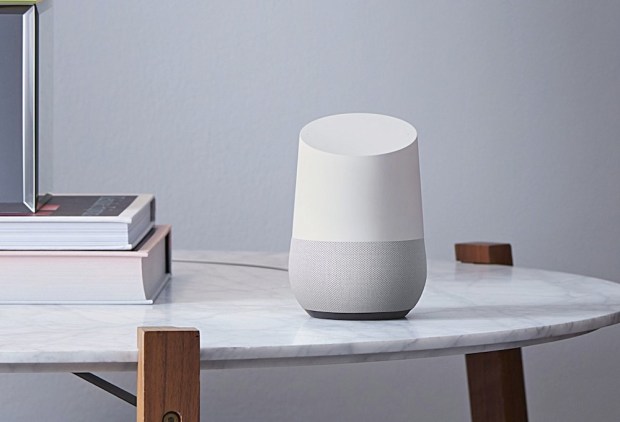Voice-Activated Tracker: Playing Catch-Up

The battle of the voice-activated giants will soon expand to the international stage. Google just recently announced that its smart speaker hardware Google Home will become available in the U.K. on April 6.
Amazon launched Echo in the U.K. last fall (just in time for the holiday season).
Here’s the kicker — while the U.S. version of Google Home now offers some limited eCommerce options, those features won’t be available in the U.K. upon the initial release. While the same was true when Echo first made landfall across the pond, it leaves Google trailing behind its competitor yet again.
Sure, Amazon had a significant head start — but functionality is going to be what wins over undecided consumers, not brand loyalty. To be truly competitive against Amazon, Google is going to have to work fast to catch up to Amazon’s offerings.
There is a definite up-side for U.K. consumers on Google’s end. Google Home will cost £130 (~$162) in the U.K. — slightly less expensive than Amazon’s Echo, which is priced at £150 (~$187). So for any cost-minded consumers interested in the smart speaker market, cost could win out over commerce functionality, at least upon first entry.
However, it’s not the just functionality of the standalone hardware device (or devices, in Amazon’s case). Google is also way behind on integrations with other IoT devices.
Meanwhile, Alexa is in deep. Here’s a connected car/eCommerce hybrid example.
Earlier this year, Starbucks announced an AI voice-reordering feature available to Android users, as well as on Amazon’s Alexa. In the next logical step, Starbucks recently announced an ordering integration with Ford’s SYNC3, the automaker’s voice-activated technology powered by Alexa, that allows drivers to voice-order their caffeinated beverage of choice while on the road.
On the new in-car voice ordering feature, customers reportedly assign their usual Starbucks order in advance and can direct the request to the 10 stores they’ve most ordered from.
Alexa also has a digital presence, or soon plans to have one, in Toyota, VW and Hyundai models, to name a few. If this move by Starbucks is any indication, expect voice-activated coffee ordering to roll out across a number of vehicle brands sometime soon.
Ford’s SYNC 3 connectivity platform is compatible with Android Auto, so it’s easy to picture that Google Assistant could work its way in as well to bring voice activation to the connected car interface. The key factor here is time, and it’s still missing the commerce factor.
Not everyone thinks that the future of the IoT is voice-enabled. (Or hopes there’s more to it than that.)
While Amazon and Google square off in the voice-activated marketplace and Apple and Samsung gear up to join the battle on the assistant end, one Singapore tech startup is approaching the matter from a different angle.
Founded in 2010, internet-of-communications startup Unified Inbox works in part to enable device-to-smart appliance communications via text.
“Think of it as a universal translator between the languages that machines speak … and us humans,” Toby Ruckert, Unified Inbox’s CEO, told Forbes.
Unified Inbox customers currently include half of the world’s smart appliance makers, Ruckert said. As of now, the startup’s platform reportedly supports over 20 of the top smartphone messaging apps along with SMS and Twitter.
Using these messaging and text-based applications, users can already control a wide range of smart home appliances, with more undergoing testing.
“Our customers are quite afraid of the likes of Amazon,” Ruckert said. “Having a Trojan horse in a customer’s home, like Echo, that they must integrate with to stay competitive is a nightmare for them.”
It will be interesting to see how the text-based controls fare in the marketplace against the voice activated giants. Since Amazon has a habit of expanding its reach, the thought of the online retail giant developing its own smart appliances has likely crossed manufacturers’ minds.
